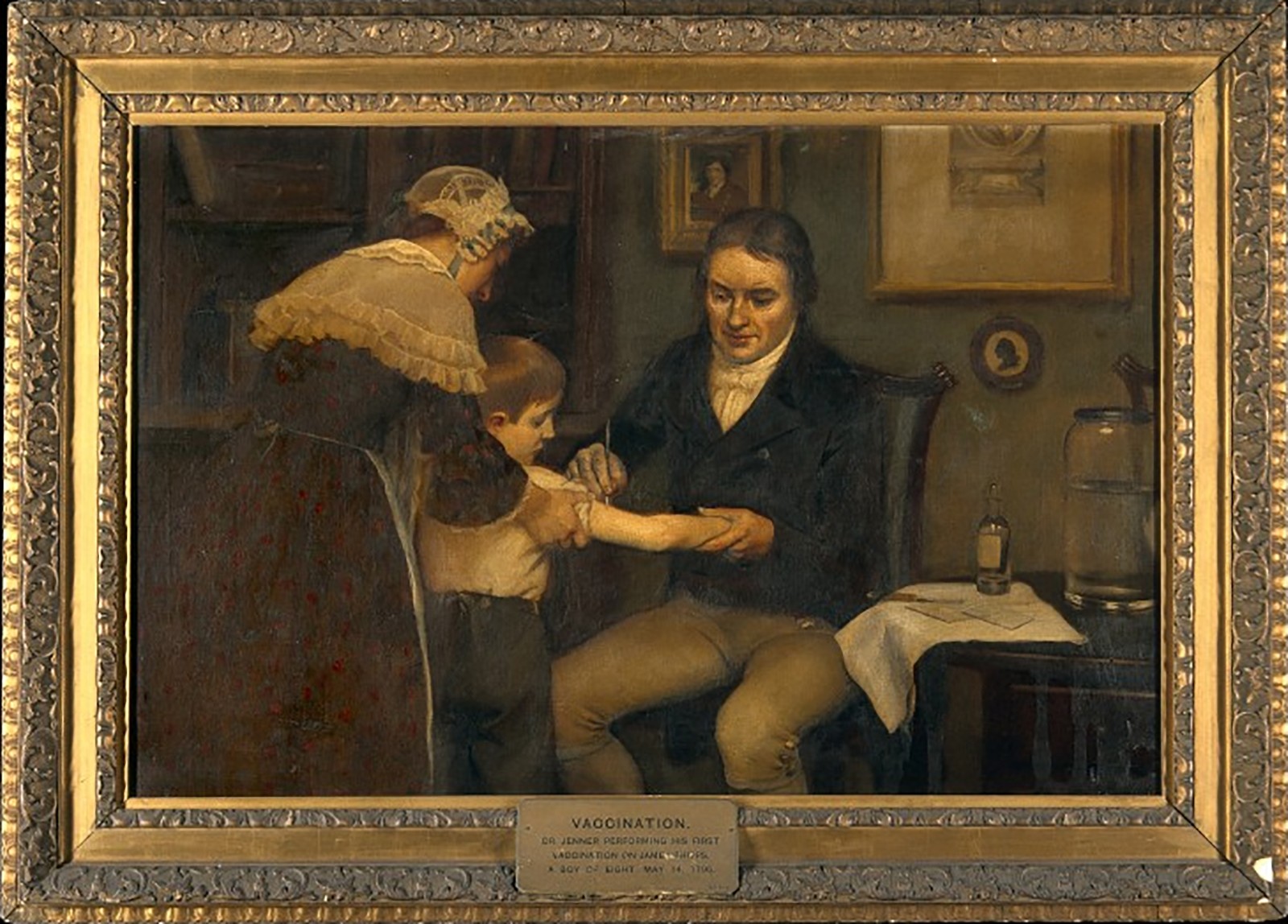
Epidemics and Thomas Jefferson
Today, it's COVID-19 and Monkeypox. But Thomas Jefferson knew a thing or two about epidemics. The virulent diseases most feared in his time were smallpox and yellow fever. When Jefferson was young, the best way to avoid the former was to have a living sample taken from a smallpox pustule placed under one’s skin, which gave the subject immunity without usually suffering the full brunt of the often-fatal disease. During this procedure, known as inoculation, patients were infectious and needed to be quarantined. This made inoculation potentially dangerous to others and controversial enough that it was outlawed in some places until the disease actually made an appearance. Jefferson was, however, convinced that it was well work the risk, and when he was a young man he made his first trip out of Virginia in 1766 to have himself inoculated in Philadelphia. Later he tried to persuade his wife to travel there to be treated, and shortly after her death he had their daughters inoculated.
In 1796 the English physician Edward Jenner developed a safer procedure to guard against smallpox. He came up with a vaccine using cowpox, which was basically harmless to humans but gave them immunity to its more dangerous smallpox cousin. Jefferson was quick to see the advantages of this method and championed its introduction in America. Working with his friend Dr. Benjamin Waterhouse, Jefferson widely distributed cowpox “matter” and instructions for its use, and on several occasions he personally vaccinated relatives, neighbors, and members of the enslaved community at Monticello.

Unlike smallpox, in Jefferson’s day there was no effective way to guard against or treat yellow fever. The disease was little understood, and doctors bitterly differed over whether it could be transmitted directly from one person to another (it couldn’t) and whether it originated locally or outbreaks were introduced from points south (the latter being true). While Jefferson was in Philadelphia serving as the first United States secretary of state, the city experienced a devastating outbreak in the summer of 1793 that eventually killed something like 10 percent of its population. Anticipating his resignation and departure for Virginia at year’s end, Jefferson had given up his house on High Street (now Market Street) and rented a place well outside of Philadelphia, at Gray’s Ferry on the Schuylkill River. He reported that he was spending most of his time sitting outside and that this had given him a new appreciation of the value and beauty of trees.
However, when yellow fever arrived in mid-August, carried on a ship from the West Indies, Jefferson was going to his office in the city each day to conduct official business. Even as deaths began to mount, Jefferson continued this commute. For safety’s sake he did not let his daughter Maria and her friend venture into the city, and on one occasion he asked the scientist David Rittenhouse to lend him a camera obscura, since “time hangs heavily on their hands, and the more so, as their drawing master cannot attend them.” Despite the dangerous situation in Philadelphia, Jefferson intended to continue on duty until President George Washington returned from a scheduled trip to Mount Vernon, feeling that one man or the other should remain at the seat of government. Eventually, however, so many people had fled that it became impossible to get anything done, and both men went back to Virginia to wait until the fever had subsided. Before they left, Washington signed and Jefferson countersigned hundreds of ships' passports and distributed them to customs officers up and down the coast, so that vessels could continue to be cleared for sea. After conditions improved with the onset of cooler weather, Washington reassembled his Cabinet in November at Germantown, Pennsylvania, and Congress returned to Philadelphia the following month.

Plate two of four plates showing the development of yellow fever. From the title: Observations sur la fièvre jaune, faites à Cadix, en 1819 / par MM. Pariset et Mazet. Authors: Etienne Pariset (1770-1847) and André Mazet (1793-1821). Image courtesy WikiMedia Commons
Much later, in 1816 Jefferson corresponded with Eusebio Valli on the subject of yellow fever. Valli was a colorful, courageous, and ultimately tragic figure. He was an Italian physician seeking to understand and learn how to treat deadly diseases. Valli did his initial research on bubonic plague, which he observed in Smyrna and Constantinople. He contracted the disease himself and recorded his observations. Valli next turned his attention to yellow fever and traveled to the United States in search of an outbreak. Evidently he thought that the best way to study an illness was to catch it himself. While he waited for the next outbreak, Valli wrote Jefferson a lengthy letter in Italian describing in great detail the history and clinical accounts of the disease. Tiring of waiting for it to appear again in the United States, later in 1816 Valli tracked it down in Havana and succeeded in contracting yellow fever. He promptly died.

May 14, 1806 letter by Thomas Jefferson on the merits of vaccination


